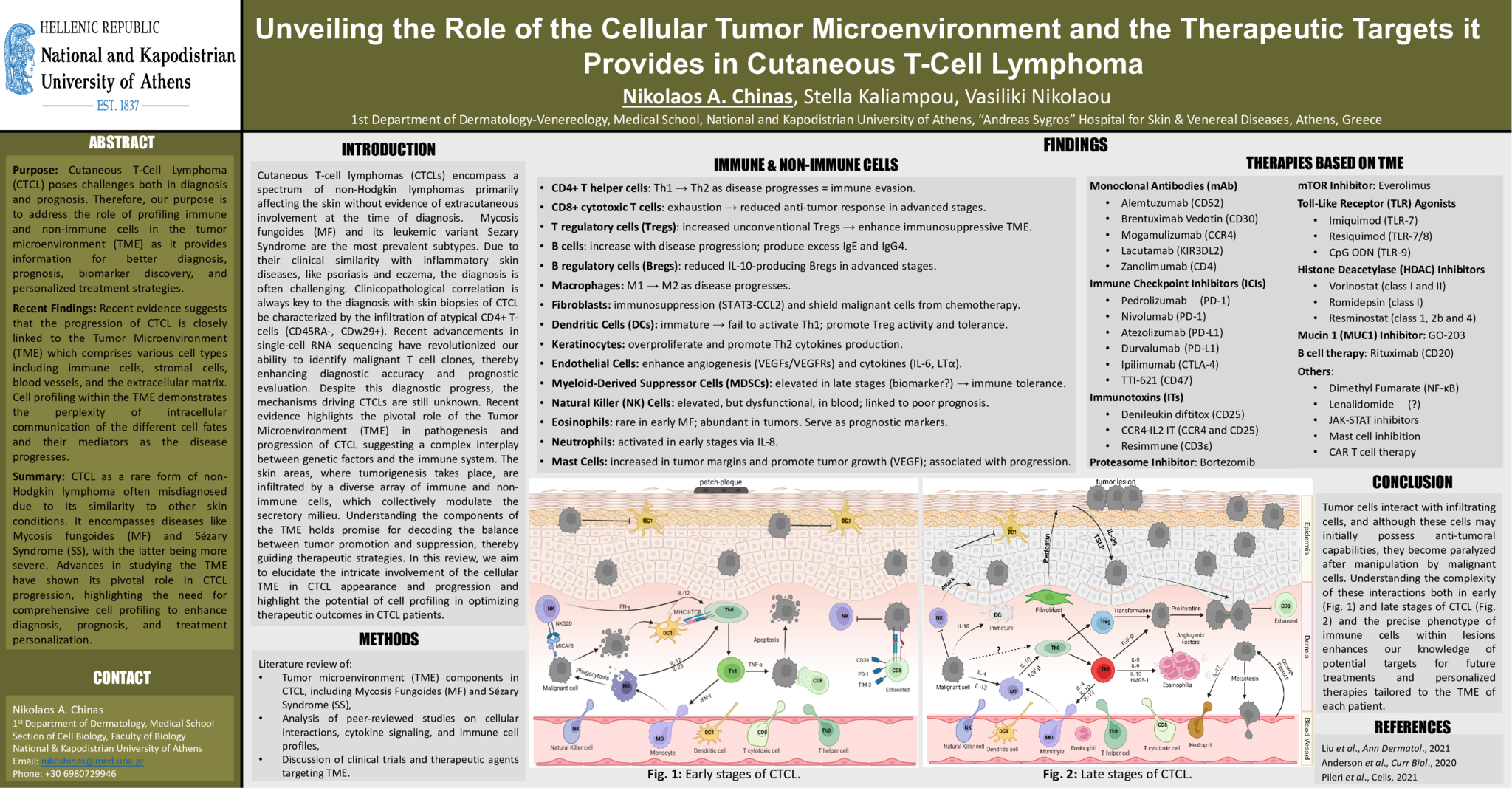Purpose
Cutaneous T-Cell Lymphoma (CTCL) poses challenges both in diagnosis and prognosis. The purpose of this review is to address the role of profiling immune and non-immune cells in the tumor microenvironment (TME) as it provides information for better diagnosis, prognosis, biomarker discovery, and personalized treatment strategies.
Recent Findings
Recent evidence suggests that the progression of CTCL is closely linked to the Tumor Microenvironment (TME) which comprises various cell types including immune cells, stromal cells, blood vessels, and the extracellular matrix. Cell profiling within the TME demonstrates the perplexity of intracellular communication of the different cell fates and their mediators as the disease progresses.
Summary
CTCL as a rare form of non-Hodgkin lymphoma often misdiagnosed due to its similarity to other skin conditions. It encompasses diseases like Mycosis fungoides (MF) and Sézary Syndrome (SS), with the latter being more severe. Advances in studying the TME have shown its pivotal role in CTCL progression, highlighting the need for comprehensive cell profiling to enhance diagnosis, prognosis, and treatment personalization.
- 8 προβολές




